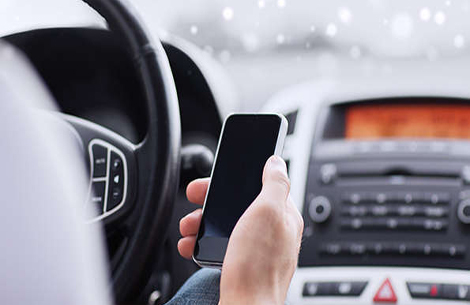
How to save phone-using motorists from themselves
These days, though, there is more than just his favorite DJ to distract a driver. In surveys of American motorists, more than two-thirds admit to using mobile phones while driving. Bans on doing so have had mixed success.
The problem is worst among teenagers, already a high-risk group behind the wheel. A study published in March, by the American Automobile Association, a motoring club, reviewed nearly 7,000 videos of teenage drivers who had had monitoring cameras put into their cars between 2007 and 2013 in exchange for cheaper insurance premiums. This analysis found that distraction was a factor in 58% of crashes—four times the figure estimated for this age group from accident reports compiled by the National Highway Traffic Safety Administration. Phone use was the second-greatest contributor to accidents. (Interaction with passengers was top.)
Help may be at hand, though. Research presented on April 20th at the Conference on Human Factors in Computing Systems in Seoul, South Korea, by Kim SeungJun, Chun Jaemin and Anind Dey of Carnegie Mellon University, in Pennsylvania, shows that yet more technology can ameliorate the problem—not by precluding the use of phones, but by minimizing the distraction they cause to drivers of all ages.
Got a second?
Dr Kim, Dr Chun and Dr Dey recruited 25 volunteers, aged from 19 to 69, to make road trips about 20km long. Every volunteer wore five motion sensors—one on each wrist and foot and one on his head—as well as a chest strap that recorded his breathing and heart rates. The car was fitted with an inward-looking camera to observe the volunteer’s “peripheral actions” while driving, such as eating, fiddling with the radio, turning on the windscreen wipers and steering one-handed. A second camera faced outward, to assess the state of nearby traffic. And a “black box” recorder took readings from the car itself, such as the throttle position, slope of the road and engine speed.
From the resulting mountain of data, the three researchers were able to work out the conditions that stressed drivers the most (increasing their heart rates or causing them to hold their breath briefly), and also those that pertained when a driver undertook a peripheral action. Taking such actions, in the view of the researchers, meant that drivers had a bit of cognitive capacity going spare and might thus be interrupted with reasonable safety to, say, listen to a voice translation of an incoming text message.
Obviously, the average driver is not going to want to wear body sensors all the time. But as the team report at the conference, they have used the data they collected to write a piece of software which can, based on inputs from the black box alone, identify the safest moment for an interruption from a phone with 92% accuracy. Moreover, Dr Kim says, a future version of the software could be tweaked to add in personal preferences. One driver might prefer to be interrupted when on a straight, flat road, for example. Another might like to wait until he was stopped at a red light.
Them's the brakes
Dr Kim, Dr Chun and Dr Dey are not the only people studying the problem of driver distraction. Jeff Greenberg, a technologist at Ford in Dearborn, Michigan is working on a “driver workload manager” that will, for example, delay low-fuel warnings for a few moments if sensors detect the person at the steering wheel is busy with other things.
Another approach is to integrate phones better with a car’s other controls. Manufacturers such as Citroën, Ford and Volvo have already added phone controls to the touchscreen which regulates the vehicle’s air conditioning, navigation system and so on. One improvement in Mr Greenberg’s sights is voice control, extending the limited set of tasks that existing speech-recognition software on smartphones can accomplish. Asking the car to place a call, find a particular song on YouTube or read a What’sApp message aloud beats fiddling with a handset and lets the driver keep his eyes on the road. Google and Apple, authors of the two most widely used smartphone operating systems, are both developing software, called Android Auto and CarPlay respectively, to do that.
Even low-tech approaches still have a part to play. In 2011, the Governors Highway Safety Association, a state-level road-safety watchdog in America, released an extensive report on distracted driving. Among its first recommended countermeasures was the humble rumble strip.







